Canada and the First Nations: A history of broken promises
An exploration of the broken treaties and betrayals responsible for a traumatic past and troubled present.
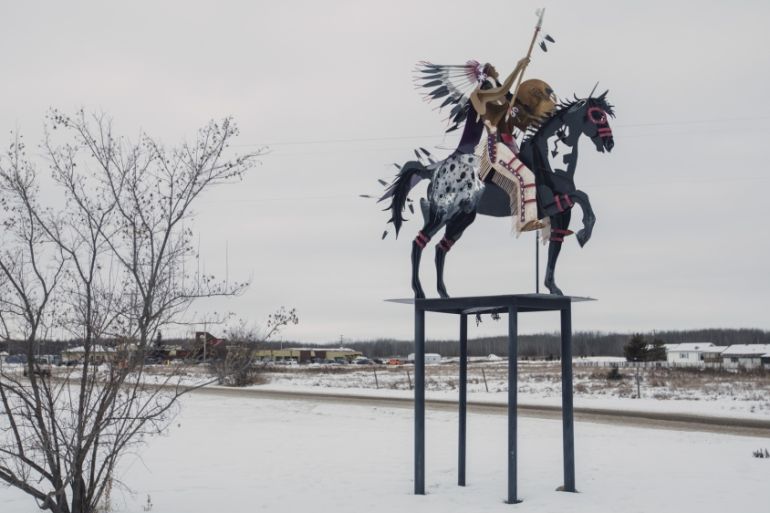
This is the second in a five-part series exploring the trauma at the heart of the relationship between a small Canadian town and the First Nations people who live in and around it.
Read more from the series here:
Keep reading
list of 4 itemsHolding Up the Sky: Saving the Indigenous Yanomami tribe in Brazil’s Amazon
Indigenous people in Philippines’s north ‘ready to fight’ as tensions rise
Curfew announced for under-18s in Australia’s Alice Springs after unrest
The ‘Back Streeters’ and the ‘White Boys’
‘Just another Indian’: Surviving residential school
‘A matter of life and death’: Rebuilding a Nation
‘How did we become enemies?’: Racism and reconciliation
St Paul, Alberta, Canada – Scattered across a rolling prairie landscape in northeastern Alberta are small towns, hamlets and First Nations reserves, most within just a few minutes’ drive of each other.
But the neighbours here are living worlds apart. In one world are members of the white-majority settler community, whose local heritage is traceable to an average of five generations. In the other are the Indigenous people whose ancestors have lived here for millennia.
They are old foes whose suspicion of one another dates back more than a hundred years.
Sacred, spiritual pacts
During the mid- to late-1800s, Canada saw a boom in European immigration. The Dominion Lands Act of 1872 offered free and fertile homesteads for the eager, new settlers.
Their descendants have prospered here on the lands and resources of the Indigenous tribes with whom they signed treaties less than 150 years ago.
The treaties are constitutionally recognised agreements between the Crown and Canada‘s Indigenous people. Most of them pertain to some kind of shared use of ancestral Indigenous land in return for payments or promises.
By the First Nations, they are considered to be sacred, living, spiritual pacts that allowed for the bounties of the land to be shared with the newcomers and for a future to be created – together.
But for the settlers, the spirit of the treaties – of peace and friendship – soon took a back seat to the pursuit of “progress”.
“The treaty that we have, and all of the treaties [in Canada] have been broken promises,” explains Carl Quinn, 66, a Saddle Lake Cree Nation cultural teacher, traditional pow-wow dancer and elder.
Carl was chief of the Saddle Lake Cree Nation in the 1980s and is also an award-winning musician who writes songs, plays the guitar and sings in the Cree language of his ancestors.
Wearing a T-shirt, slacks and his long, silver hair tied back, he sits in the comfortable home he shares with his wife – a typical bungalow-style house where the couple raised their six children on the reserve.
Carl savours the time he spends in his community – sharing knowledge and music and keeping the traditions of his tribe alive.
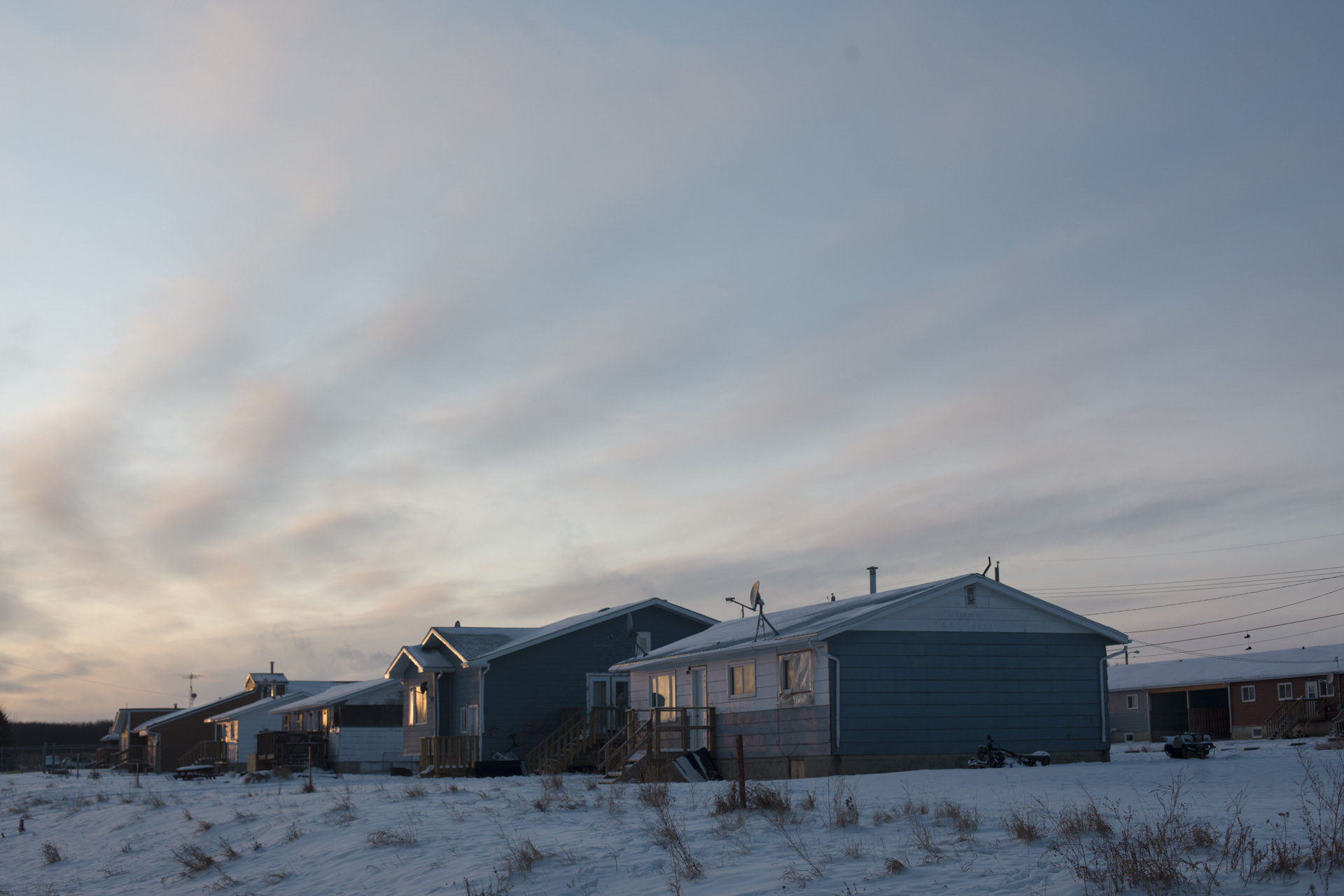
Comprehending the complicated, often shrouded, history that preceded the current tensions between the settlers and First Nations is essential to understanding them, Carl explains.
It is a shrouded history because the sovereignty of the treaties has long been forgotten, and is barely taught in most schools – meaning that many Canadians are unaware of their significance and continued relevance today.
But even when they were signed, they were interpreted very differently by the First Nations and the representatives of the Crown.
Many First Nation signatories were told of their contents via an interpreter because they could not read English. But some Indigenous languages and concepts were simply not translatable.
There were also verbal agreements that were not included in some of the treaties, but were considered just as binding by the First Nations.
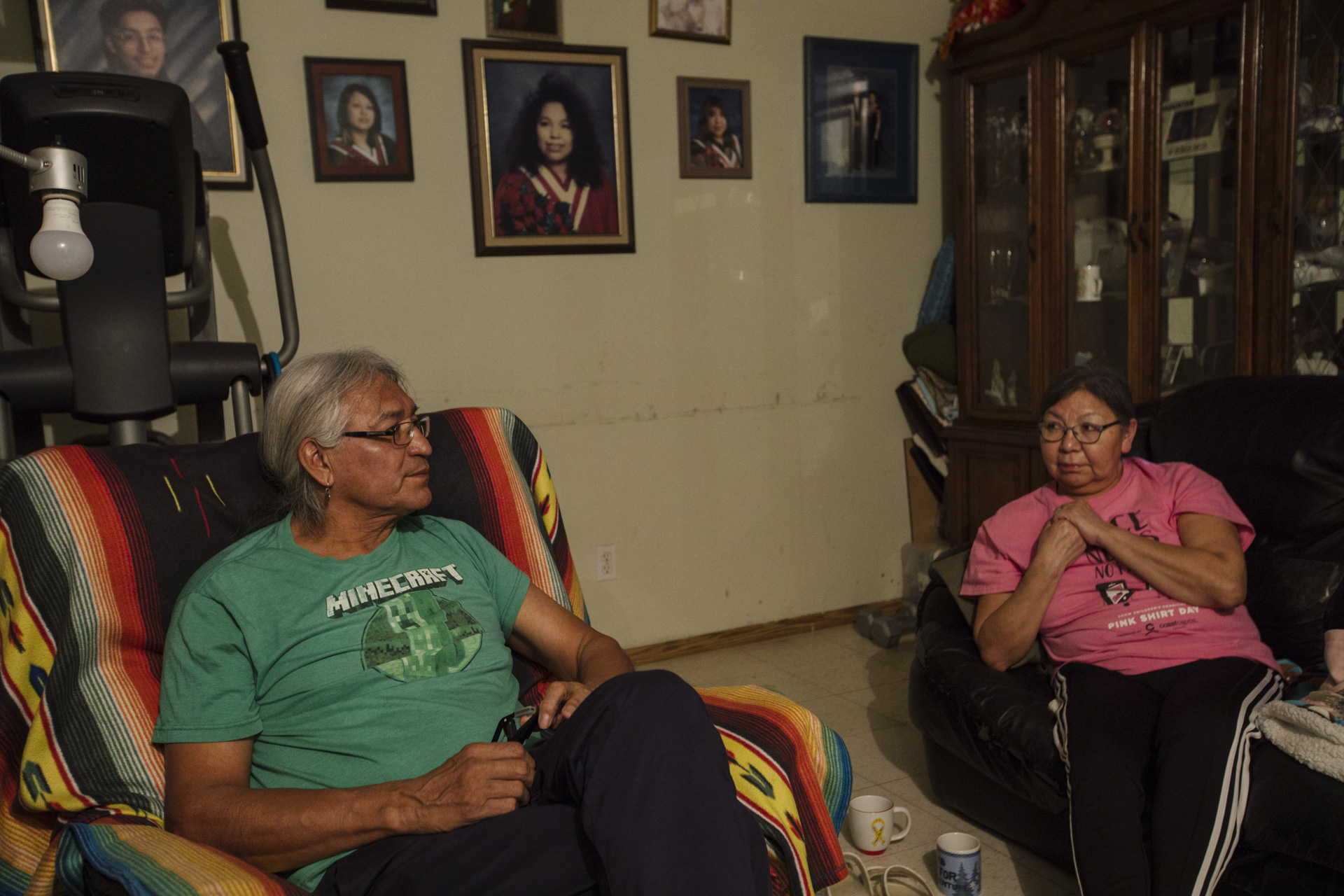
The Cree, the settlers, the buffalo and a treaty
The Cree had thrived for thousands of years off the resources of the land – hunting, fishing and trapping. Everything essential to their survival – food, clothing and shelter – was provided by it.
The buffalo were plentiful, and the nomadic Cree followed their migration patterns.
But when settlers began arriving, the buffalo were almost completely wiped out.
Many Indigenous people believe the buffalo were strategically targeted as a tactic to force First Nations people into submission to the settlers and the Crown.
“Though no official commands were put forward by the American or Canadian governments to encourage the slaughter of the buffalo, there is extensive evidence suggesting that mass hunting was encouraged to clear the plains, of both the buffalo and Indigenous people,” wrote Nancy Phillips in the research paper Skin and Bones: The Decimation of the Plains Buffalo, published in the Mount Royal University Humanities Review.
“Generals William T Sherman and Philip Sheridan played integral roles in the eradication of the buffalo and both held the view that people should ‘Kill every buffalo you can! Every buffalo dead is an Indian gone.'”
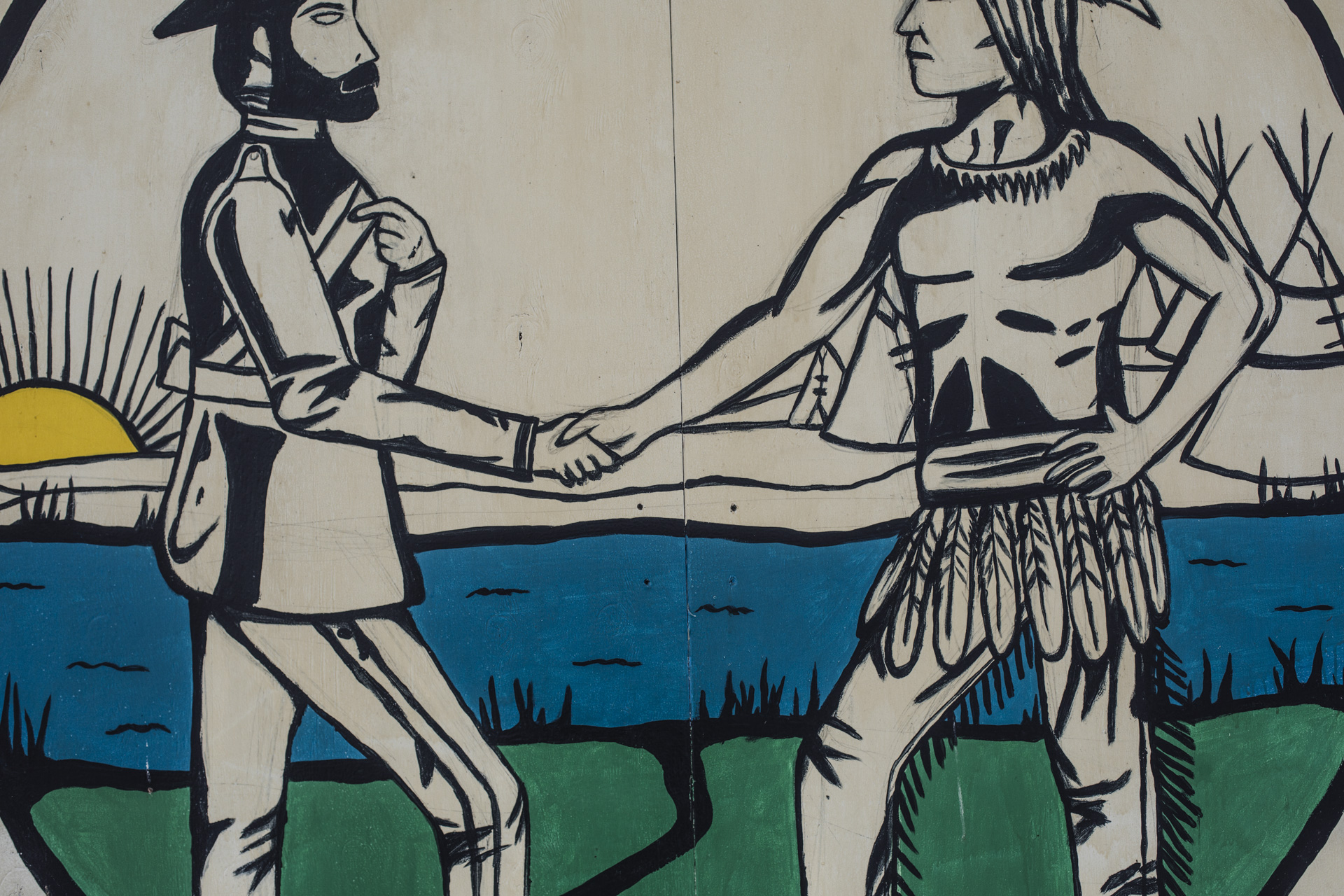
But starvation was not the Cree’s only concern. There was also the matter of disease.
According to the Report of the Royal Commission on Aboriginal Peoples from 1996, European settlers brought new diseases against which First Nations had no defence: ” Many Aboriginal people became ill and died from infectious diseases that were foreign to them, such as influenza, polio, measles, smallpox and diphtheria.”
Bellies felt constant hunger, and disease was prevalent.
Fearing starvation as a result of the rapidly dwindling number of buffalo and in desperate need of medical help to treat smallpox, which had been introduced by the settlers and which had killed many Cree, in 1876, Saddle Lake entered into Treaty 6 with the Crown.
The signing of treaties between tribes and the Crown was meant to ensure an even split of resources, and in the case of Treaty 6, it meant the distribution of food and medicines to the almost depleted tribes – at least, that was the Cree understanding of the treaties.
“The way that it [Treaty 6] was written was not what was agreed to,” says Carl. “We agreed to the sharing of the land, yes. And we told the Europeans to only take what you need from the land.”
Herded onto reserves
The government began to force Indigenous people into reserves.
The eventual boundaries of Saddle Lake reserve 125 were completed in 1902 – drawn up by the federal government of Canada after three years of negotiations with the tribes – and amalgamated Saddle Lake, Whitefish Lake, Waskatenau and Blue Quill First Nations.
The First Peoples were herded onto the reserve’s designated tracks of land and stripped of any rights except for those stipulated by the Indian Act of 1876 – a patriarchal policy that has dictated the social, political, economic, spiritual and physical lives of First Nations up until the present day.
“It [the Indian Act] was designed to oppress, designed to take the rights of the people away,” says Carl.
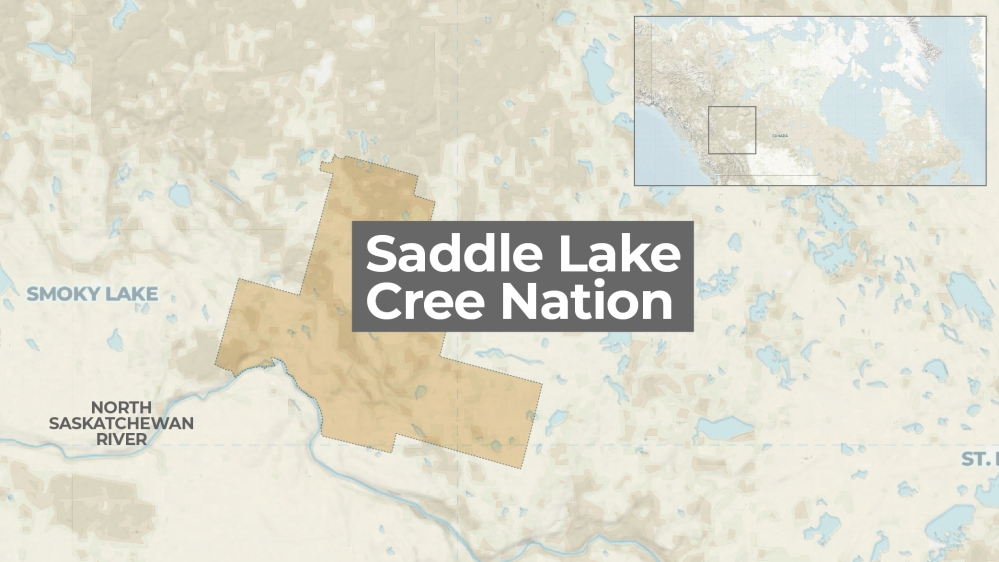
The Health Council of Canada described in its 2005 Health Status of Canada’s First Nation, Metis and Inuit Peoples report the effects of a once-nomadic people being constrained within reserves: “As a result of being confined to a limited land base, resources such as food and clothing materials, normally acquired by hunting, trapping and fishing and used for trading/bartering purposes, quickly shrunk. As access to and availability of these resources declined, major lifestyle, livelihood and diet changes occurred that affected the health status and well-being of the Aboriginal people.”
The system of reserves – which would reportedly later inspire Adolf Hitler – helped to ensure segregation.
Within less than a decade of Treaty 6 being signed, a pass system was introduced, whereby residents of the reserves could only leave them with a permit issued by the local Indian agent responsible for imposing government policy on the reserves. This system would last for 60 years, only ending during World War II.
A betrayal
The Indigenous people had been betrayed.
Friendship and the spirit and intent of the treaties was soon forgotten. It became one side against the other; with riches gained for the newcomers, while the Indigenous people were plunged into poverty and chaos.
Sacred ceremonies, cultural practices and traditional teachings such as the sun dance ceremony and the sweat lodge and pipe ceremonies were banned by the federal government.
But many kept the traditions of their forefathers alive in secret, Carl explains. Sweat lodges were hidden deep in the bush and away from the prying eyes of Indian agents.
It is a relief now, Carl says, to be able to proudly display his sweat lodge – a sacred ceremonial space inside a closed, circular structure for praying and cleansing via steaming hot rocks – in his yard.
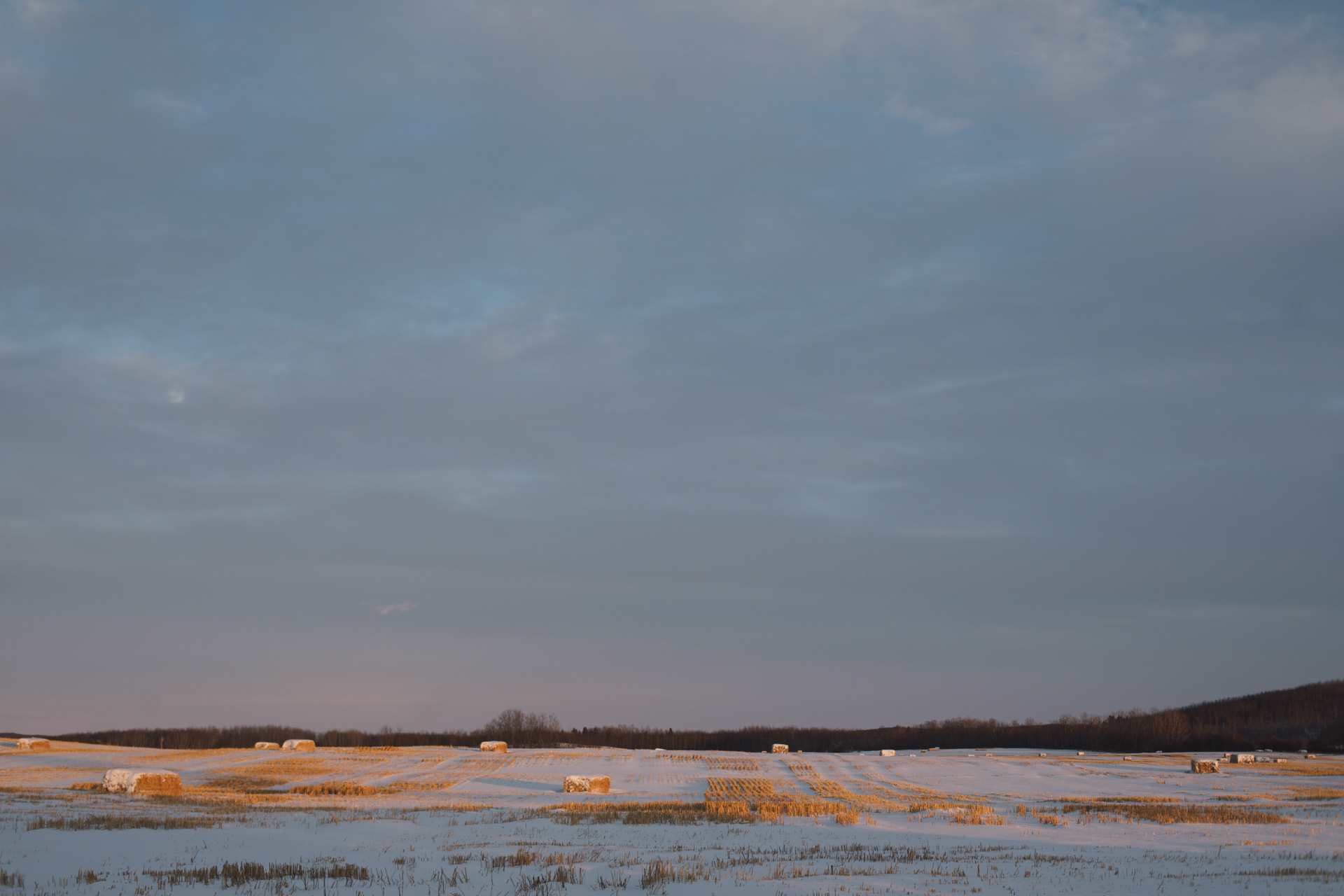
In 1862, an Indian residential school was opened in Saddle Lake. Others had been established across the country – part of an effort by the Canadian government to forcefully assimilate Indigenous children.
Run by the Roman Catholic, Anglican, United and Presbyterian churches, among others, the schools were mandated for First Nations children by the Indian Act. The Truth and Reconciliation Commission of Canada estimates that 150,000 Inuit, First Nations and Metis children attended Indian residential schools between the 1870s and 1990s. Canada’s last residential school closed in 1996. In total, 139 residential schools operated across the country, and abuse was widespread.
Children between the ages of four and 16 were ripped from their family homes by the Royal Canadian Mounted Police (RCMP) and sent to live among the priests and nuns tasked by the federal government with forcing them to assimilate to the ways of life, languages, cultural practices and religion of the settlers.
The original Catholic Church-run residential school in Saddle Lake was burned down near the turn of the 20th century. Nobody on the reserve names names, but it is widely understood that the fire was started intentionally by people from the reserve who resented it being there.
A new location was soon found closer to the St Paul des Metis settlement (now known as St Paul). It operated there until the late 1960s, when it became the first former residential school in Canada to be taken over and operated by Indigenous peoples. It was first a college and is today a well-known First Nations university.
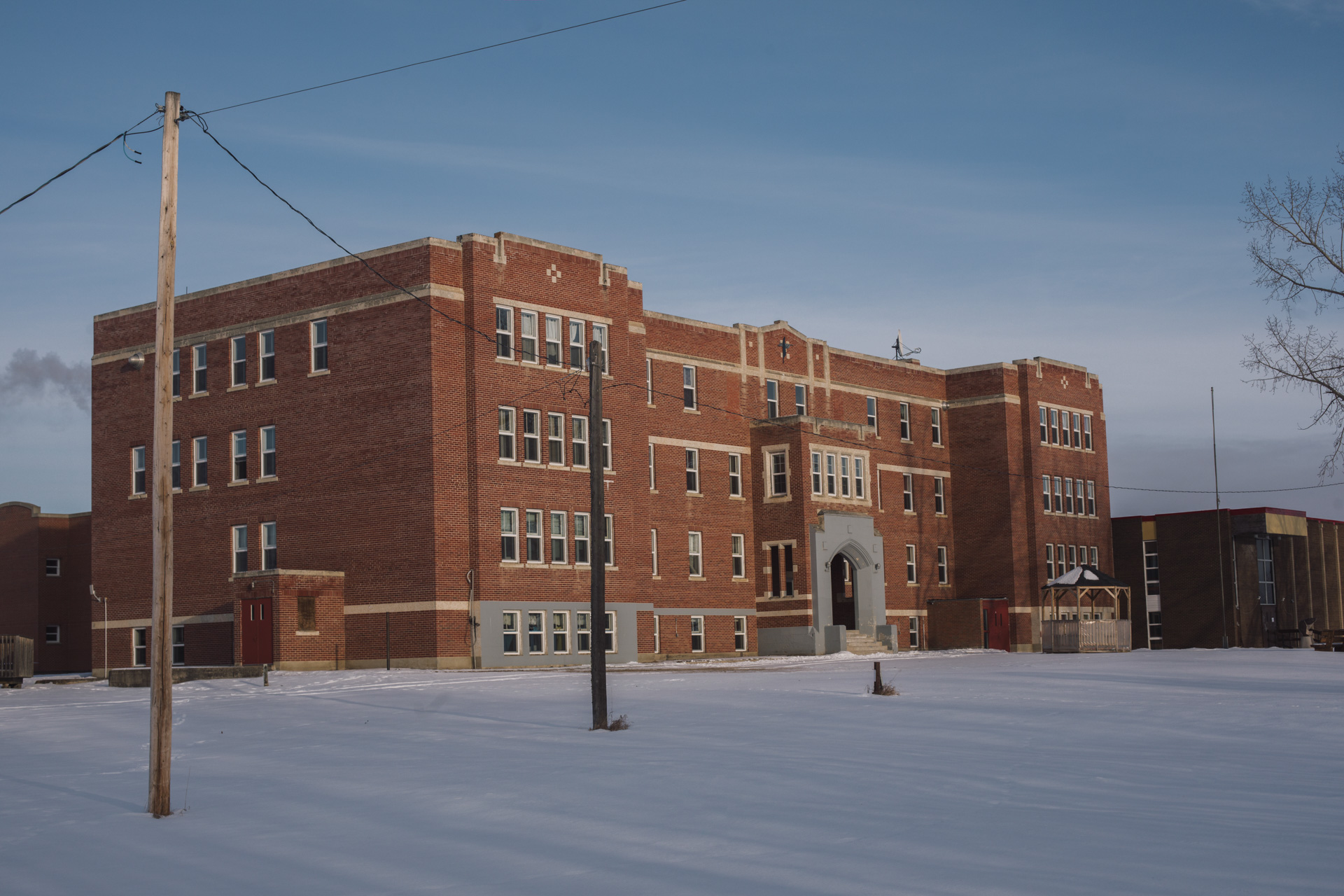
But the effects of a century or more of having their children stolen from them and held in often abusive environments cannot be erased as easily as the sign on a building.
During the testimony gathering process for the Truth and Reconciliation Commission of Canada, many people spoke of the abuse they had endured as children. According to its interim report: “The Commission heard of discipline crossing into abuse: of boys being beaten like men, of girls being whipped for running away. People spoke of children being forced to beat other children, sometimes their own brothers and sisters. The Commission was told of runaways being placed in solitary confinement with bread-and-water diets and shaven heads. People spoke of being sexually abused within days of arriving at residential school. In some cases, they were abused by staff; in others, by older students. Reports of abuse have come from all parts of the country and all types of schools. The students felt they had no one to turn to for help. If they did speak up, often it was impossible to find anyone who would believe them.”
“We are recovering from the trauma that produces PTSD [post-traumatic stress disorder], addictions, suicides and every other kind of ailment,” says Carl of the ongoing effects of the residential schools.
And the trauma did not end with the closure of the residential schools. From the 1950s to the 1980s, Indigenous children were taken from their families – in a practice known as the Sixties Scoop – and sent to live with non-Indigenous families, sometimes in other countries.
Modern-day threats
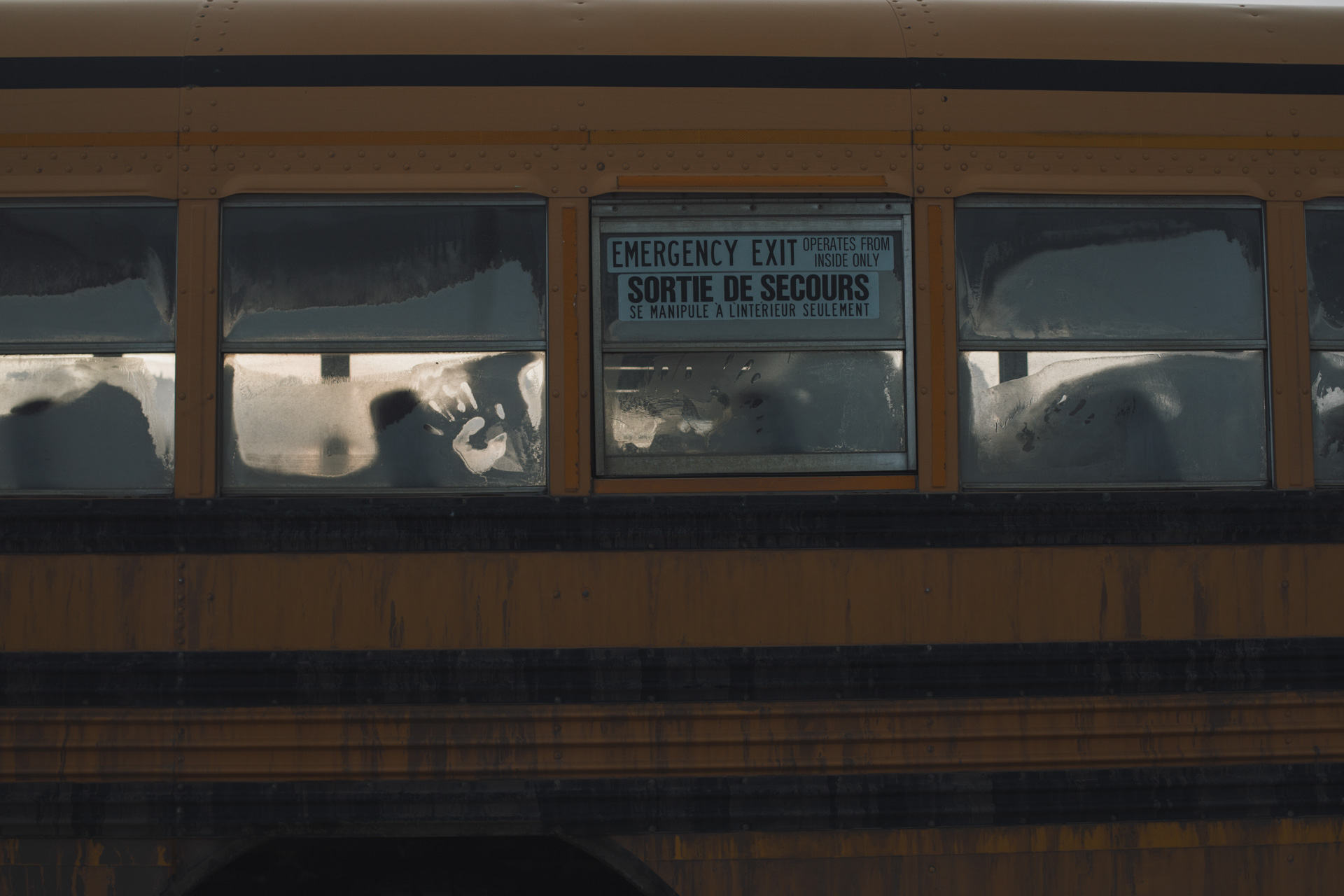
But these days, it is a different type of fear that Indigenous families in and around St Paul feel for their children.
Last November, several Saddle Lake residents began taking up arms to protect their children after Andy Sydora, a 70-year-old resident of the nearby Hamlet of Ashmont was charged with three counts of uttering threats. He allegedly threatened to shoot children at the Ashmont school, where 90 percent of the pupils are Indigenous, as well as to attack the Saddle Lake Cree Nation and Whitefish Lake First Nation. He is due to appear at the St Paul courthouse on March 19 to enter a plea.
For two weeks, hundreds of parents kept their children home from school. The Ashmont school and three reserve schools enlisted the RCMP to patrol the schools for almost a fortnight.
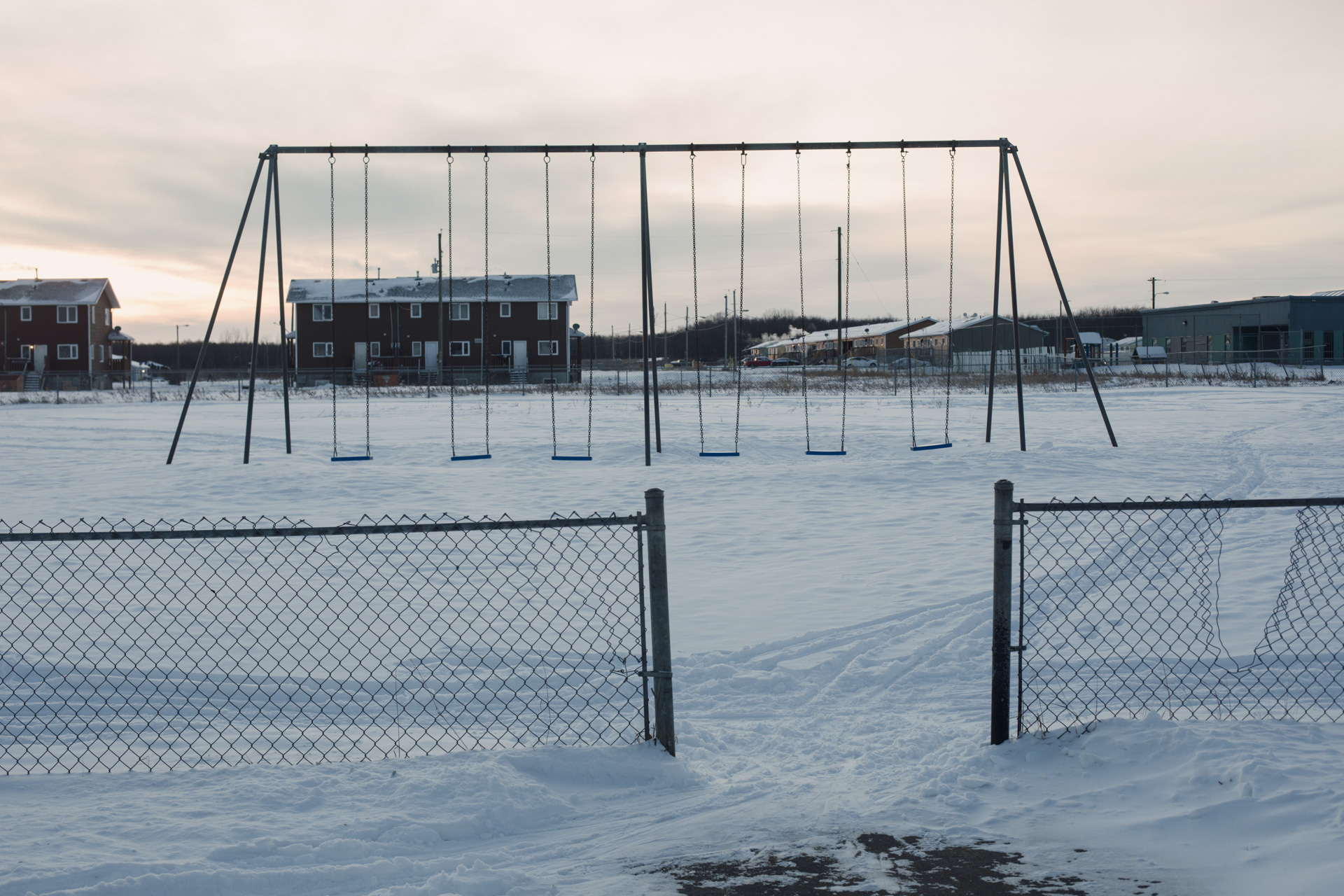
“I’ve been in this career all my life and I’ve had to, unfortunately, deal with concerning comments and allegations before,” explains Glen Brodziak, the St Paul school division superintendent. “But this one was different, in that it was made against a school and entire community.”
When she heard about the alleged threats, Tiya-Marie Large started practicing lockdown drills with her two children – 10-year-old Mylon and two-year-old Love – with the help of her mother.
“I was really scared and angry,” she says. “I have to work and couldn’t be home all the time.”
|
|
It was hard to explain to Mylon why the drills were needed, Tiya-Marie says, adding that her son is sometimes triggered by unfamiliar noises and can become gripped with fear.
Each family member has a role in the drill. Tiya-Marie says a keyword, Mylon runs downstairs to the designated room, Tiya-Marie or her mother grab Love and head there, too, and they barricade the door and huddle together on the floor, with the adults protecting the children with their bodies. They have the drill time down to 36 seconds.
Tiya-Marie says it makes them feel safer and better prepared. But she wonders why they have to live with this fear.
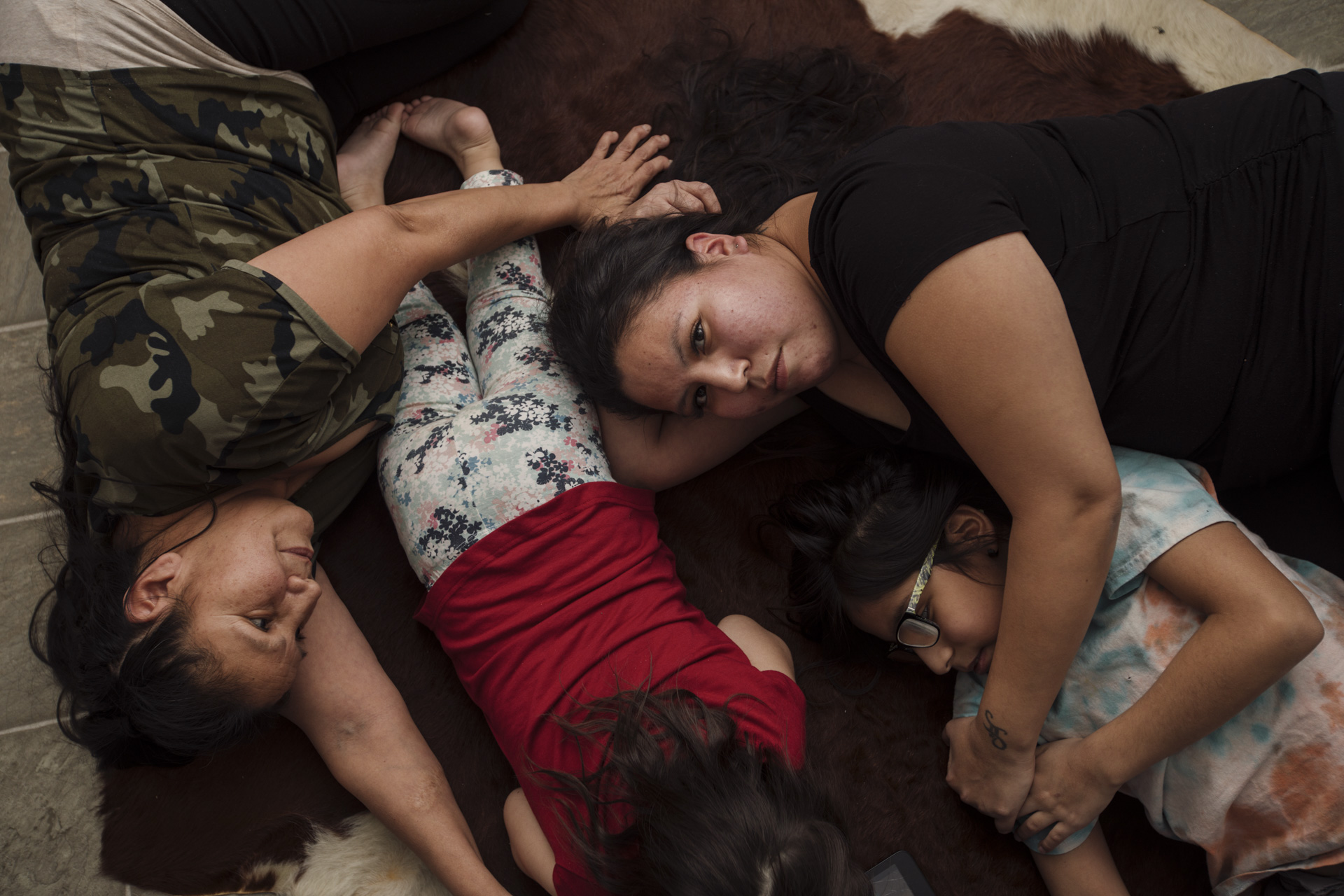
Still, Carl is hopeful.
“Alberta is one of the most redneck, racist places in the country,” he says. “But I have big hope, today …. Europeans are really good at divide and conquer tactics, but everyone is connected. The more we talk about these kinds of things, people will realise we have more in common than what divides us.”
The solutions to the conflicts aren’t going to unravel easily, Carl cautions. But he is optimistic that the tide is turning.
“It’s gonna change, there’s no doubt in my mind,” he reflects. “A lot of the old people that feel like they have privilege are dying off. So in a way, it’s good – but in a way it would’ve been good to sit down together to come to an understanding.”